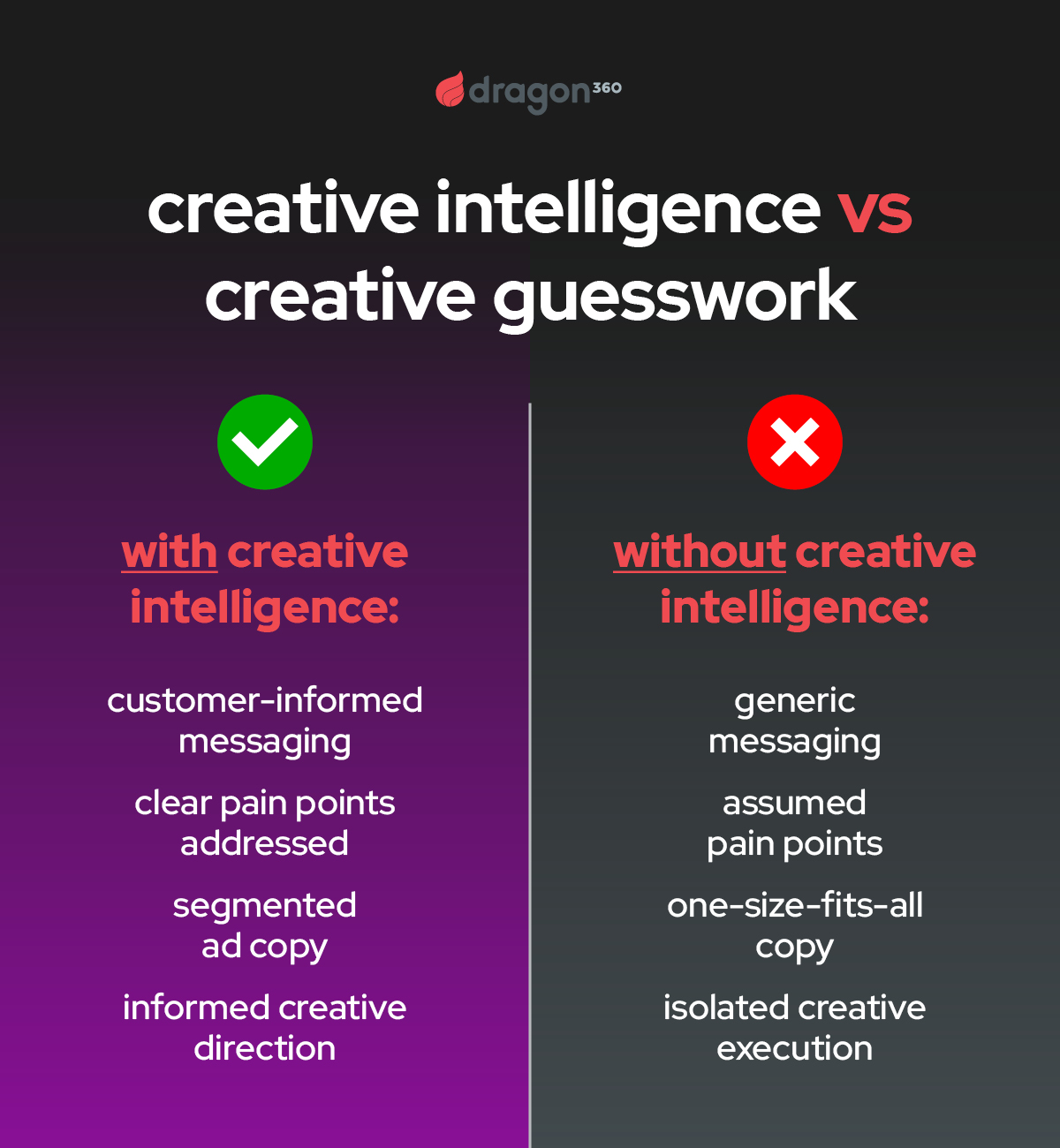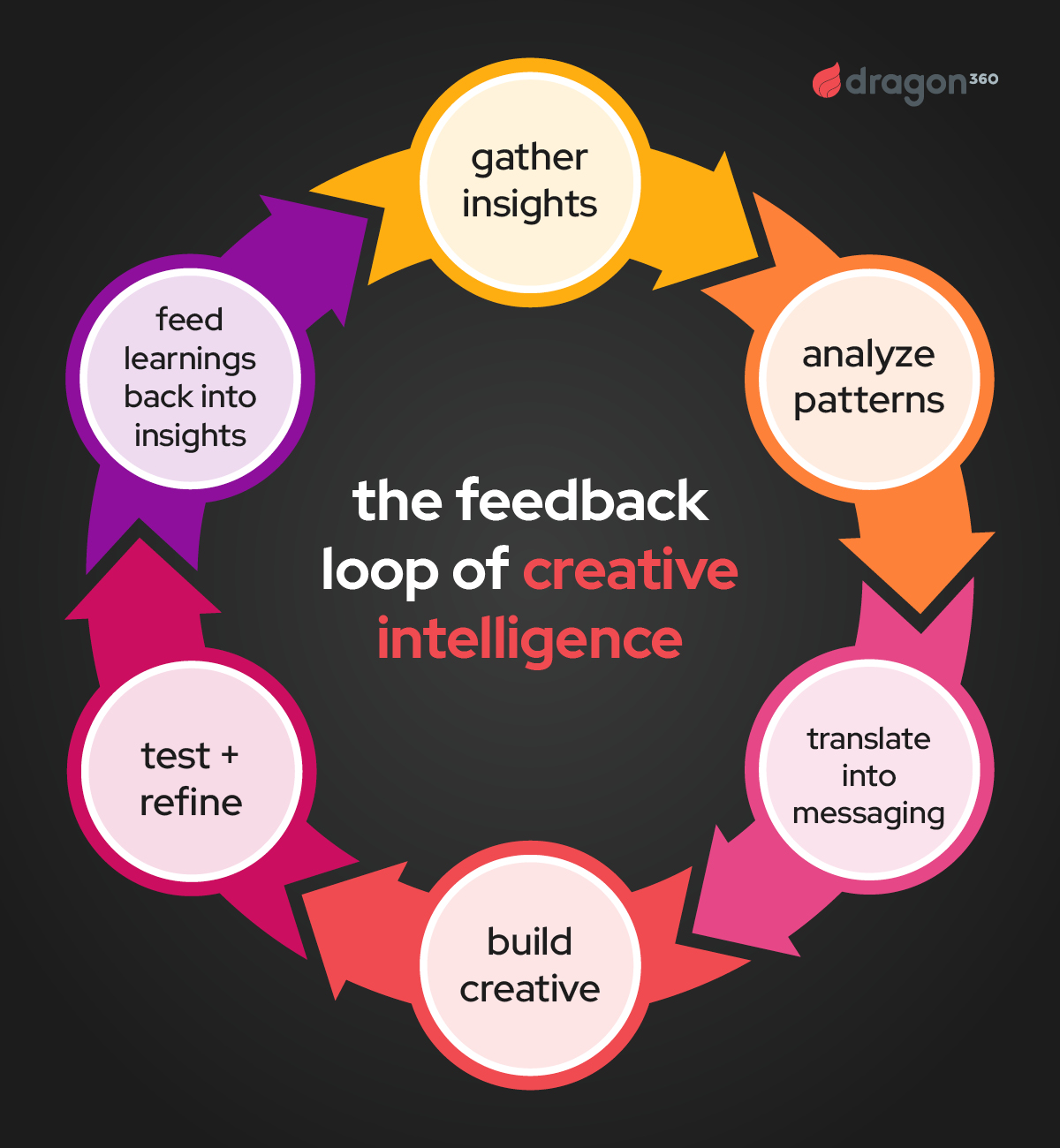Stop Winging It -
Get The Complete B2B Paid Media Guide
Learn how to develop creative that converts and strategy that scales.

B2B marketers aren’t short on tools, templates, or tactics. But what many are missing is something far more foundational: creative intelligence.
Creative intelligence is the connective tissue between what your audience actually cares about and what ends up in the market. It’s what turns insights into action and separates campaigns that check the boxes from ones that actually convert.
Too often, we see brands gather valuable information – onboarding docs, stakeholder interviews, and even AI-powered research – only for all of it to die in a slide deck. It’s not a strategy problem. It’s an execution problem. And that problem is creative intelligence.
Creative intelligence is the ability to take everything you know about your audience – their motivations, pain points, anxieties, goals, and buying behavior – and actually apply it to messaging, content, and creative strategy.
It’s not about using insights to write a persona. It’s about using them to write an ad.
It’s not about just understanding your ICP. It’s about being able to prioritize what to say, how to say it, and where to say it based on what matters most to the people making the buying decision.
If your ads are underperforming, chances are it’s not because of the format, platform, or even the spend (it could be those things too, though). It’s because the output wasn’t shaped by meaningful creative intelligence.

The real issue is that many marketers either don’t gather meaningful insights in the first place – or don’t know how to activate the ones they do have.
Here’s where creative intelligence breaks down:
The good news: creative intelligence isn’t a magical talent. It’s a repeatable process. It just takes the right approach.
Here’s what it can look like:
Use sales conversations to inform messaging. Sales reps hear real concerns and objections – daily. Use Gong or call summaries to identify recurring patterns and let those shape headline language and ad angles.
When the same objections show up across multiple conversations – like concerns about implementation time, internal buy-in, or clarity of value – it’s a signal. Those insights shouldn’t stay buried in a CRM note. They should be reflected in the creative. Ads that directly address those frictions feel more relevant and trustworthy – and they tend to convert better too.
Conduct stakeholder interviews across departments. Internal subject matter experts, customer-facing teams, and even product leads have insights that rarely get translated into campaigns. At Dragon360, we prioritize 1:1 interviews with these teams during onboarding to uncover blind spots and opportunities. And as a result, we sometimes uncover things we never would have known or learned by talking just to the head of marketing.
Talk to customers, not just leads. Stakeholder interviews with existing customers reveal what pain triggered the search, how they evaluated alternatives, and what finally convinced them. These insights become foundational to messaging, ad angles, and even offer strategy.
A member of the Dragon360 team once said it best: “Sometimes we learn that customers are using the product for things the client didn’t even realize were valuable. But that never makes it into the messaging.” And that’s the gap creative intelligence is built to close.
Distill qualitative insights into creative direction. Use AI to synthesize interview transcripts into key themes and content pillars. Then map those to actual creative decisions – headlines, social proof angles, visual treatments. Let AI do the grunt work and have your human brain craft the emotional + logical connection to your buyer.
Map messaging to specific segments or titles. A CFO and a Head of Ops may both be in the buying process – but they don’t care about the same things. In all likelihood, one is a champion while the other is the decision-maker. Your ad copy and creative should reflect that. Don’t overthink or overcomplicate this.
Build a creative intelligence layer into your process. Between research and execution, build in a step where insights are translated into frameworks: segmented messaging docs, asset outlines, pain point libraries, and testable concepts. Make this a non-negotiable part of campaign planning.

The difference between a good ad and a forgettable one isn’t just design, copy, or channel. It’s how well it reflects what your audience actually cares about.
Creative intelligence is how you get there.
If you want ads that do more than just “get seen” – ads that connect, convert, and perform – don’t just invest in better creative. Invest in better inputs.
Because the best-performing ads aren’t just clever. They’re deeply informed.
Ready to turn insights into high-performing ads? Let’s build smarter campaigns, backed by creative intelligence. Let’s Talk.